
Physicians caution that amid a desire to put an end to the Covid-19 pandemic, developers of drugs and vaccines have become overly enthusiastic about the chances their products will work. Several vaccine developers have issued statements looking into the future — setting possible timetables for study completion and vaccine manufacturing.
Biotech company Moderna said early trials of their coronavirus vaccine show promising results as volunteers developed antibodies against the virus. Eight people took part in the study. The company, which is developing the vaccine with the National Institutes of Health, says it will move on to larger-scale trials and that a vaccine could be made available as soon as January. Moderna is collaborating on its vaccine development with the National Institute of Allergy and Infectious Diseases. Dr. Anthony Fauci, the director of NIAID, said while Moderna’s numbers were limited, “it was good news” and he was “cautiously optimistic” about the vaccine.
According to the World Health Organization (WHO), there are currently over 100 vaccine efforts underway around the world. There are 10 vaccines in human clinical trials worldwide. There are four teams in the United States: Moderna, Pfizer, Inovio and Novavax. Five Chinese companies have vaccines in human trials. University of Oxford is the only team in Europe currently running trials. Inovio and Moderna have said they expect their large-scale clinical trials, known as Phase 3 trials, to last around six months. Pfizer hasn’t given a timetable for its Phase 3 trial. Worldwide, there are 114 more candidates in pre-clinical trial stages.
One big stumbling block for any vaccine trial is that Covid-19 infection rates in many areas of the world are flattening out or declining. The point of Phase 3 is to vaccinate people and then see if they naturally become infected, and with lower rates of circulating virus, the study subjects are less likely to be exposed to the virus in the first place. For a vaccine clinical trial to be successful, there needs to be sufficiently high levels of the virus circulating in the community. If there isn’t enough virus around, it will be impossible to tell if the vaccine protected the study subjects, or if they were just never exposed to the virus.
The global effort to develop a vaccine is just the beginning of this race. It also takes time to ramp up vaccine production and deciding how it will be distributed will be difficult in a world of more than 7 billion people. New drugs and vaccines traditionally go first to the wealthiest countries and that’s the expectation in this case as well. But the exact order could depend on where the vaccine is first developed and what that countries priorities are in distribution. Wealthier countries have been hit hardest by the virus so far. But in many of these nations, COVID-19 cases are leveling off or declining, while they are rising rapidly in the developing world, including countries such as India, Brazil and Peru. Nations and drug companies are likely to face a range of conflicting pressures with the need to provide the vaccine at home and intense scrutiny to share it widely, fairly and cheaply abroad.
Read more

Canada is banning military-style assault firearms, including the AR-15, two weeks after a gunman in Nova Scotia killed 22 people during a 12-hour rampage — the worst mass shooting in Canadian history. A domestic assault late Saturday night is suspected to be the catalyst of the Nova Scotia shooting rampage that left 22 people dead. The rampage began in the quiet town of Portapique on Cobequid Bay began after the gunman assaulted his longtime girlfriend. Police said Gabriel Wortman, 51, led police on a miles-long manhunt across the Canadian province. He died after a confrontation with police. He was wearing a RCMP uniform and drove what appeared to be a police cruiser.
When Prime Minister Justin Trudeau announced the ban he said “We are closing the market for military-grade assault weapons in Canada. We are banning 1,500 models and variants of these firearms by way of regulations. These weapons were designed for one purpose and one purpose only: to kill the largest number of people in the shortest amount of time. Families of the victims deserve more than thoughts and prayers.” Family and friends of the victims have said that an emergency alert by police could have prevented some deaths. Police on Wednesday admitted that they failed to issue a timely alert to the public. Police learned about the gunman’s attire and vehicle from his girlfriend after 7 a.m. but the formal process for issuing an alert still took several hours to make its way up the chain of command. Nearly three hours after they learned the identity of the suspect, an alert had still not been issued. Prime Minister Justin Trudeau said the failure to issue an alert would be part of a larger investigation.
Police believe a domestic assault triggered the shooting spree. The couple returned home after arguing at a nearby party shortly before 10pm, where Wortman attacked his girlfriend and she fled into the woods to hide. Wortman then set his house on fire and returned to the party where he opened fire, killing seven people. The first 911 calls reporting gunshots were made at 10:01pm. When officers arrived on the scene at 10:26pm, they discovered thirteen victims who had been shot and killed both inside and outside of eight homes on Orchard Beach Drive and Portapique Beach Road, three of which were burning. Police said many had died while trying to escape the flames or in helping other victims. Wortman also shot and injured two dogs.
Police initially believed the killings were confined to the area and ordered a lock down. But the rampage, which spanned 16 locations, continued, with the gunman killing nine other people over several hours, police said. Wortman’s injured girlfriend emerged from the woods several hours after the first shooting deaths, just after 7am Sunday. She is still recovering from serious injuries but provided police key information about the gunman including a description of him, that he was impersonating an officer and a possible list of targets.
During his rampage, Wortman arrived at a home of acquaintances and killed the two occupants, as well as a neighbor who came to help. After setting the house on fire, police say he pulled over two vehicles and killed the occupants. He also shot and killed a woman walking along the road. Sometime before 10:49am, Wortman pulled alongside RCMP Constable Chad Morrison’s cruiser on Route 2 in Shubenacadie. Morrison had planned to meet fellow officer Heidi Stevenson at that location. Wortman shot into the car, injuring Morrison, who drove to a nearby hospital after reporting Wortman’s location.
As Wortman fled the scene, he collided head-on with Stevenson. Stevenson engaged Wortman, who shot and killed her, before taking her sidearm and ammunition. He also set both cars on fire and killed a nearby motorist who stopped to help. He then stopped at the home of a woman he knew and killed her before stopping for gas. Wortman was recognized by a RCMP officer at the gas station and was fatally shot.
Read more
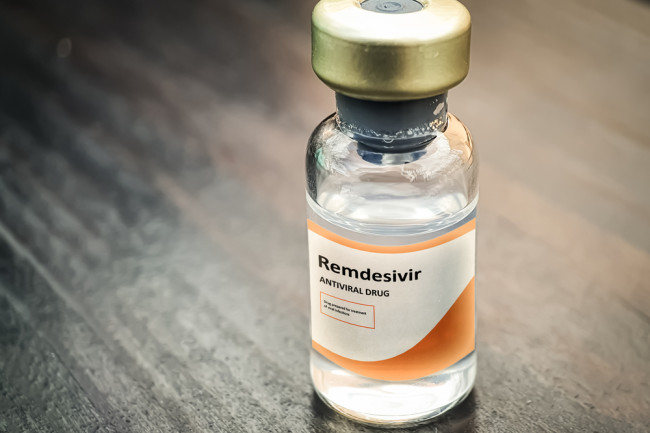
The Food and Drug Administration (FDA) announced the emergency use authorization for the antiviral drug remdesivir, after preliminary results from a federal trial showed the drug could speed recovery in patients infected with the coronavirus. The finding, which has not yet been peer reviewed, came after another study found no benefit for the drug in severely ill patients in China. The new results suggest a moderate improvement in the death rate of patients taking remdesivir, whose hospital stays were shortened, on average, from 15 days to 11.
The issuance of an EUA is different than FDA approval. In determining whether to issue an EUA, the FDA evaluates the available evidence and carefully balances any known or potential risks of any unproven products with any known or potential benefits of making them available during the emergency. Based on evaluation of the emergency use authorization criteria and the scientific evidence available, it was determined that it is reasonable to believe that remdesivir may be effective in treating COVID-19, and that, given there are no adequate, approved, or available alternative treatments, the known and potential benefits to treat this serious or life-threatening virus currently outweigh the known and potential risks of the drug’s use.
The emergency use authorization (EUA) allows for remdesivir to be distributed in the U.S. and administered intravenously by health care providers, as appropriate, to treat suspected or laboratory-confirmed COVID-19 in adults and children hospitalized with severe disease. Severe disease is defined as patients with low blood oxygen levels or needing oxygen therapy or more intensive breathing support such as a mechanical ventilator.
The EUA requires that fact sheets that provide important information about using remdesivir in treating COVID-19 be made available to health care providers and patients, including dosing instructions, potential side effects and drug interactions. The EUA is temporary and will be effective until the declaration that circumstances exist justifying the authorization of the emergency use of drugs and biologics for prevention and treatment of COVID-19 is terminated. It may be revised or revoked if it is determined the EUA no longer meets the statutory criteria for issuance.
Possible side effects of remdesivir include increased levels of liver enzymes, which may be a sign of inflammation or damage to cells in the liver; and infusion-related reactions, which may include low blood pressure, nausea, vomiting, sweating, and shivering.
The top coronavirus task force scientist Dr. Anthony Fauci welcomed news of the first potential treatment for COVID-19. The U.S. government will coordinate the donation and distribution of remdesivir to hospitals in cities most heavily impacted by COVID-19. Given the severity of illness of patients appropriate for remdesivir treatment and the limited availability of drug supply, hospitals with intensive care units and other hospitals that the government deems most in need will receive priority in the distribution of remdesivir.
Read more
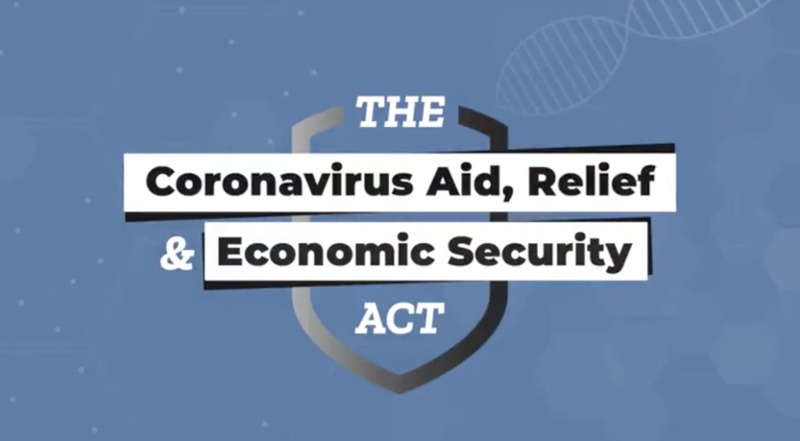
The US Senate overwhelmingly approved $484 billion in new coronavirus aid with most of the money replenishing the Paycheck Protection Program, set up to provide forgivable loans to small businesses. The bill adds another $310 billion to the Paycheck Protection Program, another $75 billion for hospitals, $25 billion for testing and $60 billion for emergency disaster loans and grants.
The bill provides no new stimulus checks for U.S. households, no additional money for food stamps, no limits on fossil fuel bailouts, no funds for election security, no bailout for the U.S. Postal Service and no additional funds for hard-hit state and local governments. Lawmakers were criticized for refusing to take up new assistance to hard-hit U.S. residents — like cash payments and food aid — in the latest relief bill. They were also criticized for not regulating the disbursement of the initial funds which allowed big businesses like corporate chain restaurants getting tens of millions of dollars in loans meant for small businesses.
They contend lawmakers are failing to provide for millions of unemployed people who are unable to pay rent and increasingly at risk of going hungry. Progressive lawmakers are demanding $2,000 monthly payments to all U.S. households and open enrollment in Medicare for uninsured and unemployed people, when lawmakers take up another round of funding, the so-called phase four coronavirus bill.
Senators are in talks for a phase four bill with priorities for that legislation including federal assistance for people having trouble paying rent, according to a Democratic source. Schumer also cited the need for funds for election reform, hazard pay for essential workers, including doctors, nurses and grocery store clerks, and funding for the U.S. Postal Service. Many are skeptical since the virus bailouts have already cost over $2 trillion, pushing our annual deficit this year to close to $4 trillion.
The pandemic continues to batter the U.S. economy as the Labor Department reported another 4.4 million U.S. workers filed for unemployment benefits over the last week, raising new jobless claims over the past five weeks to more than 26 million — a scale that hasn’t been seen since the Great Depression. As of March 13, there were already 7.1 million unemployed Americans, according to the U.S. Bureau of Labor Statistics. When the figures are combined, it would equal more than 33 million unemployed, or a unemployment rate of 20.6%—which would be the highest level since 1934.
Read more
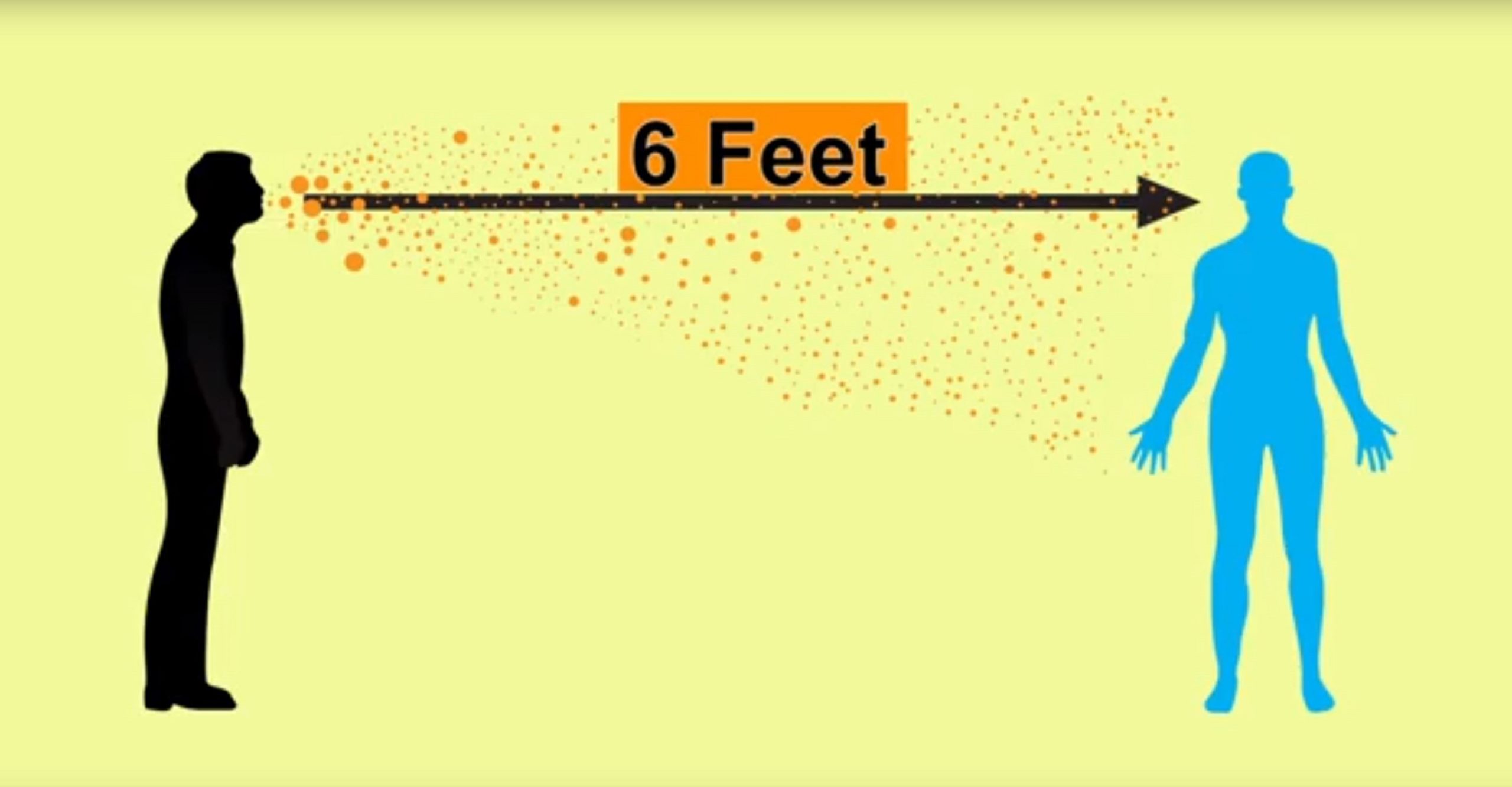
Many Governors across the US are ending stay at home order- many of which have been in place for over a month. Reopening states to business is a difficult and controversial topic. Should states reopen too early, coronavirus cases may spike again, undoing the good social distancing did for weeks. Should they continue to stay closed, small businesses across the state may never recover and fiscal crises could severely damage many states.
Here are the states with orders set to expire:
Alaska Gov. Mike Dunleavy allowed nonessential businesses to reopen for regular business hours, with varying restrictions by sector, on April 24. Many travel and fishing restrictions have also been lifted. Alabama Gov. Brian Kemp said businesses like gyms, hair salons and barber shops could open on April 24 with theaters and restaurants reopening on April 27. Arkansas Gov. Asa Hutchinson never put an official stay-at-home order in place and has announced he hopes to ease some closures on May 4 with an announcement on when restaurants can accept dine-in customers on April 29.
Colorado’s stay-at-home order expired on April 27, moving to a new phase which allows retail businesses to do curbside pickup, other businesses can reopen with medical precautions and elective surgeries may resume. Businesses such as salons, dog groomers, personal trainers and elective medical services will be allowed to open May 1. On May 4, offices may reopen with 50% capacity.
Idaho Gov. Brad Little announced his plan to reopen the state beginning on May 1 and proceeding with four steps through June 13. The first phase would allow most retail establishments and places of worship to reopen, subject to strict social distancing guidelines. Indiana Gov. Mike Holcomb said elective surgeries may resume April 27 and he planned to lessen restrictions in early May.
Iowa has not had a stay-at-home order since April 20 and Gov. Kim Reynolds lifted the ban on nonessential surgeries beginning April 27. Kansas Gov. Laura Kelly said she is moving forward with the goal of reopening the state on May 3 if crucial guidelines are in place. Minnesota Gov. Tim Walz has projected May 4 as a reopening date.
Missouri Gov. Mike Parson is not extending the state’s stay-at-home order, set to expire on May 4. On that day, all businesses may reopen following social distancing guidelines. The mayors of Kansas City and St Louis have stay at home orders with end dates of May 15, which will supersede the state wide order and remain in effect for several counties. Montana Gov. Steve Bullock said the state’s stay-at-home order will be expire on May 3rd and certain nonessential businesses can begin to reopen beginning April 27.
Ohio’s stay-at-home order will expire May 1. Health procedures that do not require an overnight stay in the hospital may resume as well as dental and veterinary services. On May 4, manufacturing, distribution, construction and office work can resume with increased distancing and other health measures. On May 12, retail and other services may resume. Besides that, the stay-at-home order remains in place and gatherings are still limited to fewer than 10 people.
Oklahoma will lift restrictions on barber shops, nail salons, spas, elective surgeries and state parks on April 24. Movie theaters, gyms and restaurants will be allowed to reopen May 1. Pennsylvania Gov. Tom Wolf announced a phased reopening set to begin on May 8. Tennessee’s stay-at-home order would expire on April 30.
On May 1, Texas will allow retail stores, restaurants, movie theaters, malls and museums and libraries to operate at 25% capacity. However in rural counties with few cases, businesses can operate at 50% capacity. The target date for Phase 2 is May 18. Washington Gov. Jay Inslee released a plan to reopen businesses no earlier than May 4 on contingencies of a slowing of the spread of the virus.
Delaware, District of Columbia, Louisiana, Maine, Michigan, New Mexico, South Carolina, Virginia and Vermont have orders set to expire on May 15. New York will also reopen portions of the state on May 15. Connecticut’s stay at home expires on May 20. Wisconsin’s order will expire on May 26. Hawaii’s order will expire on May 30. California, New Jersey, Utah and West Virginia have no end dates to their orders.
Read more

Several thousand cars flooded the streets around the state Capitol in Lansing, Mich. to protest the governor’s extended stay-at-home order. Operation Gridlock, as the protest was named, was conceived as a drive-in protest that would block Lansing streets. Organizers said they support some coronavirus restrictions around social distancing, but believed Whitmer has gone too far. As such, they say they planned a protest that would still maintain social distancing guidelines — without contributing to the spread of infection.
At least 200 people broke from the instructions of organizers, getting out of their vehicles to congregate around the steps of the Capitol building, flouting social-distancing guidelines to remain 6 feet apart, and not wearing masks. Many mask-less protesters, some of whom flew Confederate flags and open-carried AR-15 and AK-47 variants, gathered to demand an end to outbreak-reduction efforts and a premature return to normalcy.
The state of Michigan has the third-highest number of COVID-19 cases, 32,000 and over 2,400 deaths. Gov. Gretchen Whitmer has faced a steady drumbeat of criticism for issuing one of the most stringent stay-at-home orders. Among other things, it bars landscapers from working and shutters many greenhouses and nurseries. She extended her original order last week to now end April 30th. The new version of the order banned travel between homes. As of Monday, more than a quarter of the state’s workforce had filed for unemployment benefits. Southeast Michigan and Detroit remain a hot spot — claiming the lion’s share of COVID-19 cases and deaths. Detroit has more than 7,700 positive cases.
Over the past 10 days, the number of patients hospitalized with COVID-19 dropped 6.7%, to 3,374. During the same period, the number of patients on a ventilator decreased from 1,441 to 1,102, a 24% decline, according to data from the Michigan Department of Health and Human Services. Dr. Joneigh Khaldun, the state’s chief medical officer, attributed the progress to the governor’s March 24 stay-at-home order that was previously extended to April 13.
Whitmer is expected to extend her stay-at-home order, which expires at the end of the month, until there is a larger testing capacity and a significant decline in the number of new cases and deaths. Although the numbers are declining, dozens of people are still dying each day. Some counties that have been hard hit are seeing a decline in new cases but the number of deaths continue to rise.
Read more

As countries impose lengthy lockdowns to combat the spread of the coronavirus, reported cases of domestic abuse have spiked around the world. In the weeks since populations worldwide have been directed to “stay home” to prevent the virus’s spread, cases of domestic violence have surged — and that’s reported cases. Women who are victimized are now confined to isolated homes with abusive partners whose coercive and physically violent tendencies are enabled and further inflamed by economic stressors. Supportive community ties are severed, while emergency services, shelter systems, and social services are overwhelmed and congenitally underfunded.
Millions of Americans are not safe from violent abuse at home and now the federal, state and local governments are telling everyone to stay home – for their own safety. For some people, going to work may be their only reprieve from emotional abuse and violence. For others, the only place their children are safe from abuse is at school. Now they have been told to stay at home. Few jobs are completely safe from the economic fallout of the coronavirus crisis and stressed abusers have their targets at home.
According to statistics released by the U. N., reports of domestic violence in France rose 30% following the country’s lockdown on March 17; during the first two weeks of lockdowns in Spain, the emergency number for domestic violence received 18% more calls; and help lines in Singapore have received 30% more calls. In the US, law enforcement agencies have seen domestic violence cases rise up to 35% in recent weeks. Keeping in mind, that 50% of domestic abuse cases go unreported.
Advocates fear domestic violence survivors may have trouble getting away from their abusers and are calling the rise an epidemic during a pandemic. They are urging communities around the world to make sure resources are readily available for survivors. Even before the pandemic, an average of 20 people in the United States experienced physical domestic violence every minute. Research shows 1 in 4 adult American women and 1 in 7 adult American men have experienced some type of severe violence – including being hit with something hard, being kicked or beaten, or being burned on purpose – at the hands of an intimate partner.
Advocates are already seeing a pattern of increasing domestic violence around the world, correlating with the timing of social distancing lockdowns. In Seattle, one of the first U.S. cities to have a major outbreak, the police saw a 21% increase in domestic violence reports in March. In Texas, during March the Montgomery County District Attorney saw a 35% increase in domestic violence cases. Police around the country are adapting their domestic violence response plans to prepare for the expected increases and to ensure victims can get help even with restrictions on public movement.
Many organizations that serve survivors of domestic violence may also struggle to stay afloat during the pandemic. Many child-protective organizations are experiencing strain with fewer workers available, so they may be unable to conduct home visits in areas with stay-at-home orders. While such operational changes may lead to inaccurate reporting of child abuse and neglect, many advocates are expecting a surge in cases to continue to rise while they’re resources are still limited during the pandemic. The recent US$2 trillion federal CARES Act included assistance for nonprofits that provide support for domestic violence victims, letting them apply for business loans and help meeting payroll.
Read more
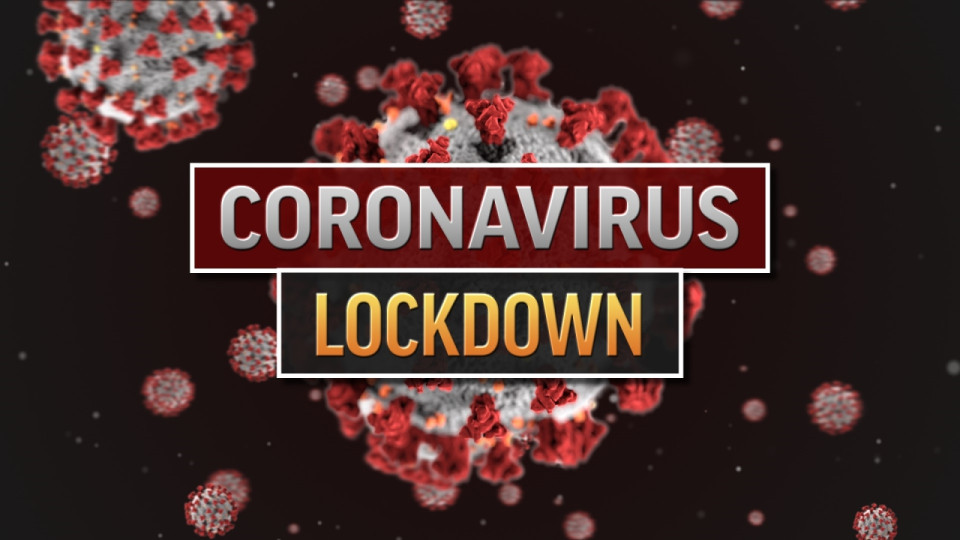
Millions of U.S. residents are now under some sort of stay-at-home order in response to the Covid 19 pandemic. There are now over 500,000 confirmed COVID-19 cases in the U.S. — more than one-quarter of the reported total cases worldwide, though the actual numbers both in the U.S. and around the world are likely much higher due to limited testing. Governors that were originally against stay-at-home orders finally succumbed last week after COVID-19 cases in their states increased rapidly.
There are still a few states that have not issued stay at home orders. Arkansas, Iowa, Nebraska, North Dakota, South Dakota, Utah and Wyoming have yet to issue any state-wide orders but they have a number of local directives suggesting residents stay indoors or have stay at home orders in place only in their harder hit counties.
For the other 95% of Americans, the states they call home slowly joined the majority to issue stay at home orders for all non-essential activities. Just as governors issued stay-at-home orders on a rolling, piecemeal basis, they have done the same on the backend, with each governor setting his or her own time frame for lifting the order. Consequently, we have end dates spanning two months, from April 15 to June 10. More than half of the states have already extended the end date of their original order and the new end date could be pushed back again as the pandemic unfolds.
Three Pacific coast states — California, Oregon and Washington — have formed an alliance called the “Western States Pact” that will reopen at the same time. They announced that they “have agreed to work together on a shared approach for reopening our economies – one that identifies clear indicators for communities to restart public life and business.” California was the first to issue its order but within 3 days, Oregon and Washington followed suit. All three states orders were issued with no set end date so their orders stay in place until further notice.
On the east coast, seven states — Connecticut, Delaware, Massachusetts, New Jersey, New York, Pennsylvania and Rhode Island — have formed the “Multi-State Council” that will also reopen at the same time. New York Governor Andrew Cuomo said the council “will come up with a framework based on science and data to gradually ease the stay at home restrictions and get our economy back up and running.” Many of these states with an end date on their original order issued extensions with new dates in May.
Two states have stay-at-home orders that are set to expire soon; Idaho (April 15) and Kansas (April 19). Both Idaho Governor Brad Little and Kansas Governor Laura Kelly have indicated that they will extend the orders. Eight states’ orders are due to expire between April 20 and April 26. Indiana, Mississippi, Alaska, District of Columbia, Missouri, Montana, Wisconsin and Colorado are fast approaching their end dates. Four governors — half of this group — have already issued one extension and several have stated they are planning another.
For the last week of April, 19 states are due to lift their stay-at-home mandates. South Carolina, New York, North Carolina, Alabama, Arizona, Florida, Georgia, Hawaii, Illinois, Louisiana, Maine, Michigan, Nevada, New Mexico, Pennsylvania, Tennessee and Texas have end dates at the end of April but again, more than half of the governors in this group have already extended the end dates for their orders once.
Nine states have stay-at-home orders that end May 4 or later. Notably, seven of them have already bumped back their end dates once, from April to May. If the trend continues, we can expect more states to be extending their mandates into May.
Read more
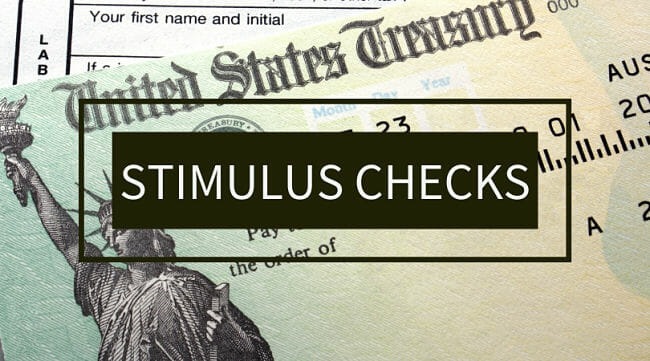
The $2 trillion stimulus bill in response to the COVID-19 pandemic was passed by the House. The plan includes a one-time direct payment to Americans, which Treasury Secretary Steven Mnuchin said should arrive within three weeks. Individuals will receive up to $1,200, married couples will get up to $2,400 and $500 will be added for every child. You don’t need to apply for the checks. The money will automatically be transferred directly to the bank account you included in your most recent tax return. If the IRS doesn’t have your direct deposit information, you’ll get a check in the mail. People receiving nontaxable income would still get checks and those receiving Social Security benefits. Anyone behind on child support payments will not receive any payments.
There are income restrictions: If you earn more than $75,000 as an individual or $150,000 as a couple, the total amount you’re eligible to receive starts to decrease. If you earn $99,000 or more as an individual or $198,000 as a couple, you aren’t eligible to receive a stimulus check. The more you earn, the less money you’ll get. If you earn $75,000 or less as an individual, you’ll get the full $1,200. If you earn more than that, $5 will be subtracted for every additional $100 of income. (The checks phase out completely if you earn $99,000 or more.) The same sliding scale applies for couples earning between $150,000 and $198,000.
The IRS extended the federal income tax filing due date from April 15, 2020, to July 15, 2020 but this deadline did not extend to state income taxes. For those who have already filed 2018 and 2019 taxes and whose information is up to date and accurate, there’s no need to do anything at all. If you have not filed your 2019 taxes, they will use the 2018 return. The IRS is urging people to not wait to file their taxes and to file electronically. Filing now will give them the most up to date information to get stimulus payments out. They encourage anyone with a tax filing obligation who hasn’t filed a tax return for 2018 or a previous year to act now. This step is especially important for low-income Americans who don’t typically file taxes. In that case, they would still need to file a form.
Taxpayers can defer federal income tax payments due on April 15, 2020, to July 15, 2020, without penalties and interest, regardless of the amount owed. This deferment applies to all taxpayers, including individuals, corporations and other non-corporate tax filers as well as those who pay self-employment tax.
Read more

As homebound Americans are online for work and to keep in touch with friends and family, some internet providers have lifted data caps without significant interruptions to service from the increased bandwidth. The crisis has renewed calls for the FCC to regulate the internet as a utility and for a reversal of a repeal of net neutrality protections. Many are also adhering to the FCC’s Keep Americans Connected Pledge (PDF), which asks the signees not to terminate a customer’s service for non-payment. Below are the providers and what they have pledged.
AT&T – All AT&T home Internet Wireline customers, as well as Fixed Wireless Internet customers, can use unlimited data. AT&T will continue to offer $10/mo Access from AT&T service for qualifying customers. They will also not terminate the service of any customer who can’t pay their bill, and will waive the fees associated with late payments within the next 60 days. All their public Wi-Fi hotspots will be open to everyone.
CenturyLink- CenturyLink said it has committed to waive late fees and to not terminate a residential or small business customer’s service due to financial circumstances associated with COVID-19 for the next 60 days. They are also suspending data usage limits for customers during this time period and hav committed to the FCC’s Keeping Americans Connected Pledge.
Comcast- Comcast has paused enforcement of its data caps for 60 days, giving all of its customers unlimited data for that period. (Comcast normally gives its Xfinity customers two “grace” months for every 12, allowing them to exceed their data cap without penalty.) New subscribers to Comcast’s $9.95/month Internet Essentials plan will receive two months free, and speeds were increased to 25Mbps down and 3Mbps up. Comcast is also making its Xfinity WiFi service free for everyone, regardless of whether you’re a Comcast subscriber or not.
Cox- Cox is eliminating data usage overages for the next 60 days. Customers with a 500GB or existing Unlimited plan will receive credits. They also will not terminate service for any residential or small business customers, and would open its Cox WiFi hotspot network to keep the public connected.
Cox is offering free support calls and the first month free to its low-cost Internet service, Connect2Compete. Customers on its Essential plan will see their speeds increased from 30Mbps to 50Mbps.
Charter (Spectrum)-Charter Communications’ Spectrum services does not have data caps. They will offer free Spectrum broadband and Wi-Fi for 60 days if that household has K-12 students or college students who do not already have a Spectrum broadband subscription. Charter said it will open its Wi-Fi hotspots for public use.
Mediacom Communications- Mediacom has paused monthly data allowances through May 15 across all broadband service tiers. New customers who sign up for Mediacom’s Access Internet 60 broadband service can do so for $19.99/mo for 12 months, rather than $29.99/mo. It has also made its Wi-Fi hotspot network publicly accessible, for free, for 60 days. They also will not disconnect service or assess late fees for the next 60 days to any customer who calls and informs the company that they cannot pay their bill.
Sprint- Sprint has extended its network to include T-Mobile’s network as well for the next 60 days. Sprint has also signed the Keep Americans Connected Pledge and will waive fees and not terminate services if customers are unable to pay because of the coronavirus for the next 60 days. Customers with metered data plans will now receive unlimited data for 60 days. They will also receive an additional 20GB of hotspot data for the same period.
Starry- Wireless broadband ISP Starry has made Starry Connect, a broadband program for public and affordable housing owners, free through May. Normally, the program, which provides 30Mbps symmetrical speeds, is $15/mo. Starry has also agreed to suspend cancellation of service due to nonpayment due to the coronavirus. It already does not charge additional fees or late fees. Starry’s service does not include data caps, either.
Verizon- Verizon will waive late fees and keep residential and small business customers connected if negatively impacted by the global crisis. It is also upgrading the data plan on its Verizon Innovative Learning program for Title 1 middle schools from 10GB/month to 30GB/month for the next two months and removed data caps on Verizon home Internet subscribers. They will also waive overage charges in addition to pledging to not terminate service and waive late fees.
Read more












